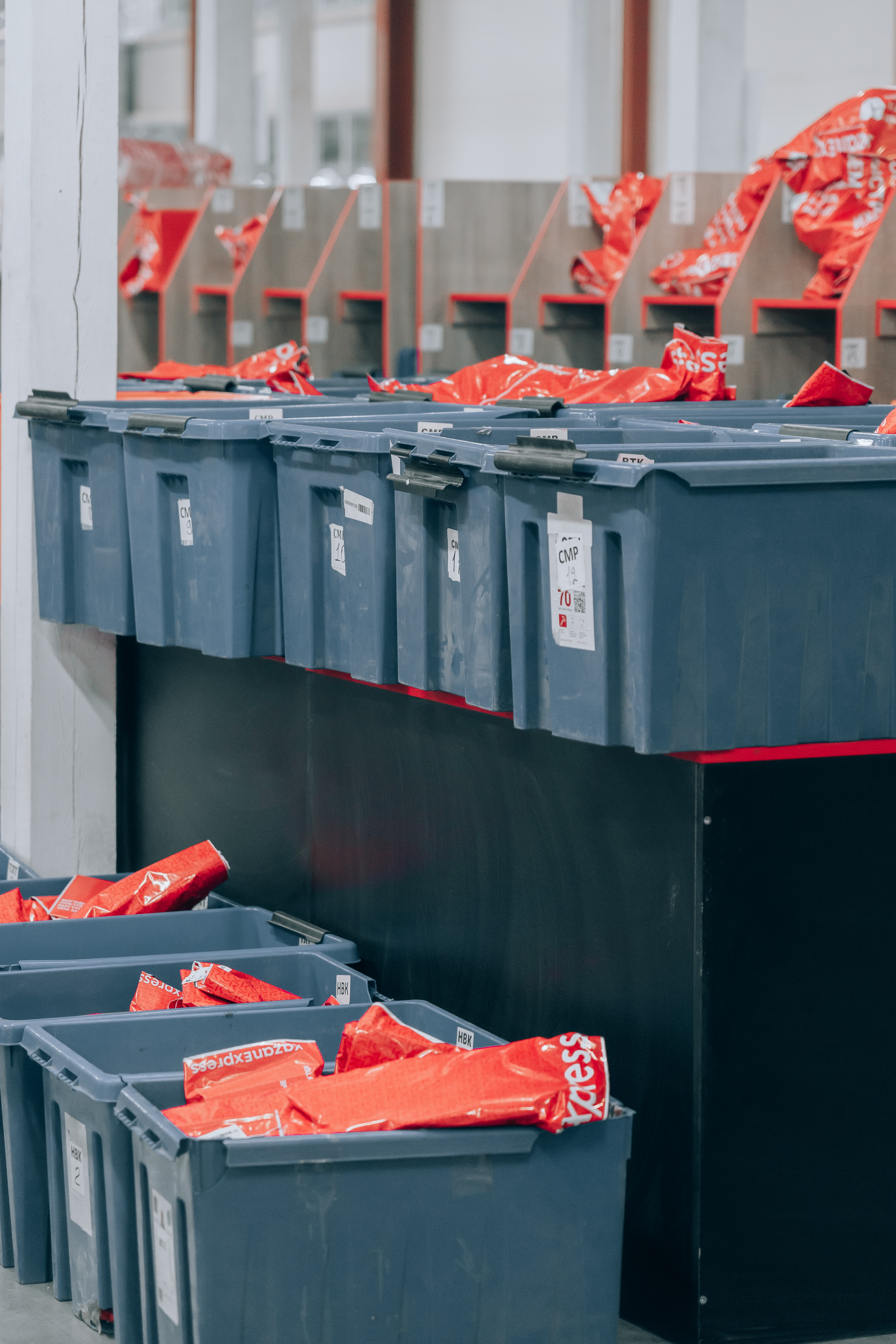eCommerce has grown from a retail footnote into a multi-trillion-dollar industry sector at breathtaking speed. This progression has left many participants perpetually playing catch-up. Technological standards, business trends, and consumer behaviors are constantly changing. Keeping pace requires so much attention that certain operations inevitably get placed on the back burner.
eCommerce order fulfillment is a prime example of this. If a brand’s methods of order processing are working, management may think, “If it ain’t broke, don’t fix it." This often results in outdated and inefficient processes becoming entrenched when there are certainly better ways to do things.
At SkuNexus, we develop management software solutions to specifically address and streamline warehouse operations. We’d like to share our functional knowledge with you. An abundance of tools exists to make your lives easier, but just what they are is not always obvious.
Here, we’ll explore multiple methods your brand can employ to optimize its order fulfillment. The majority of which involve the powerful combination of management systems and automation.
Receiving
It cannot be repeated enough: Optimized fulfillment begins before an order has ever been placed. Operational accuracy at the loading dock is the best way to get the ball rolling in the right direction. Key actions can include:
- Receipt against PO: It is critical to compare what is received to what was ordered. This step ensures adherence to both inventory planning and budgeting. It also saves a “matching” step for the finance department. As a feature of SkuNexus, for example, a PO automatically comes up when a copy (from the box) is scanned, and the total number of items received are automatically compared to the PO.
- Checks on counts: Employees must be taught a precise method of counting inventory received to ensure accuracy. Particular direction must be given to appropriately translate vendor quantities (e.g., cases) into quantities stored in the inventory management software (e.g., units). With management software, barcode scanning into inventory is generally used and translations are done automatically.
- Establishing a way to investigate discrepancies: Teams must have a method to flag the receipt for manager review and provide enough information to investigate any missing items, damaged items, or incorrect items. This feature is built into SkuNexus.
- Allowing for partial receipt info to flow into accounting: An incomplete delivery can still be needed immediately to fulfill customer orders. After scanning goods into inventory, the number of items received and expected invoice amount should be relayed to accounting. With SkuNexus, this gets done automatically.

Pick, Pack & Ship
At their core, the fundamental elements of pick, pack & ship have changed very little over time. However, the need for vastly more productive processes has fueled innovations. These innovations have dramatically altered the options available to merchants to optimize order fulfillment.
Determine Fulfillment Methods by Location
eCommerce retailers can now differentiate what fulfillment type(s) they will support for any given location. Management software can simplify what would be an excessively complicated web of operations based on these methods.
- For merchants with multiple warehouses/retail locations, order management software will route the order to the fulfillment location nearest the customer.
- For businesses experiencing staffing issues, order routing decisions can also be made based on available manpower at a given location.
- An order management system (OMS) can determine if a ship-to location is too distant to ensure timely delivery. In this case, it can route the order to better suited dropshipping vendor. Vendor management software can then generate a PO and send the order for third-party fulfillment.
- BOPIS, an increasingly popular option for customers, demands a high-level of fulfillment service to be properly executed. Seamless communication and task management between your eCommerce platform, brick-and-mortar locations, and an inventory management system are crucial to making it happen.
Picking Protocols
The geometric increase in order volume that can come with eCommerce growth has created significant challenges for the industry. Fulfillment delays, overworked employees, and unhappy customers created the need for new picking protocols to be developed. Industry leaders have answered the call. With the aid of fulfillment software, multiple complex picking systems may now be employed based on a merchant’s specific requirements.
- Directed Single Order/Discrete Picking
- The simplest method for streamlining picking processes.
- A pick list is automatically generated and organized according to a precise route through the warehouse.
- The Warehouse Management System (WMS) helps ensure accurate picking and eliminates time spent “searching” for items.
- Batch Picking
- Batch picking eliminates wasted trips across a warehouse. It allows a picker to remain in an area and fulfill multiple orders (with the same SKUs) simultaneously.
- Works best for companies that are frequently shipping orders with the same SKUs.
- Zone Picking
- Works to effectively eliminate “transit time” by assigning pickers to zones within the warehouse.
- If an order requires items from multiple zones, one picker will begin and then transfer picking to another. Hence, zone picking is also called “pick and pass.”
- For brands with a considerable number of complex orders, zone picking can be a viable solution. However, this model requires extreme organization and a sophisticated WMS to work properly.
- Warehouse layout becomes critical here, and the WMS can help inform decisions on where products should be located.
- Wave Picking
- Perhaps the most complicated picking protocol.
- Best suited for larger enterprises with a considerable number of SKUs, wave picking requires the coordination of a multitude of elements.
- In this model, picking takes place in scheduled “waves” throughout the day.
- Available pickers, item locations, ship dates, and carrier pickups are all taken into account and evaluated.
- The WMS analysis determines the optimal order fulfillment “wave” based on these inputs and assigns picking accordingly.
Group Picking Designs & Controls
The variety and complexity of these picking methods, combined with a merchant’s unique situation, can demand customization. Indeed, a combination of some or all of the above may be the optimal solution.
The ability to customize your picking processes and place the necessary controls to maintain accuracy is a valid and attainable goal. SkuNexus empowers merchants to design the exact system to suit their needs.

Packing Protocols
A great deal of waste within fulfillment can be found in the packing process. Automated protocols for parcel sizes and insulating materials can be established to address this issue.
- Standardized Parcels: Based on each individual order, an automated pack list can take the guesswork out of packing. Standardized parcels for both individual items as well as those commonly purchased together will eliminate waste and reduce shipping costs.
- Correct Materials: Just as the right-sized box can be directed, so too can the correct type (and amount) of materials. Certain items may need bubble wrap while others may demand dry ice. When a management system makes these decisions, it saves an enormous amount of time and ensures orders are packed safely.
Shipping Protocols
Shipping will most likely be handled by a third-party carrier. However, that does not mean that an eCommerce merchant cannot maintain certain protocols in the process.
- Service/Payment Match: It is crucial to strictly adhere to the customer's chosen shipping option throughout the entire fulfillment process. An organized shipping management system matches customer-chosen and executed shipping options. This is necessary to maintain both internal accuracy and customer satisfaction.
- Tracking: Your order management system has to interact with the shipping carrier once the order has left your facility. Merchants need to be able transmit tracking information in real time to customers.
We hope this has been a useful primer on how to streamline your order fulfillment processes through management software and automation. At SkuNexus, we talk to companies tackling these issues every day, and we are here to help.
If you would like to learn more about what we do, please subscribe to our blog.
Better yet, let one of our team members give you a full demo on SkuNexus and its features.

